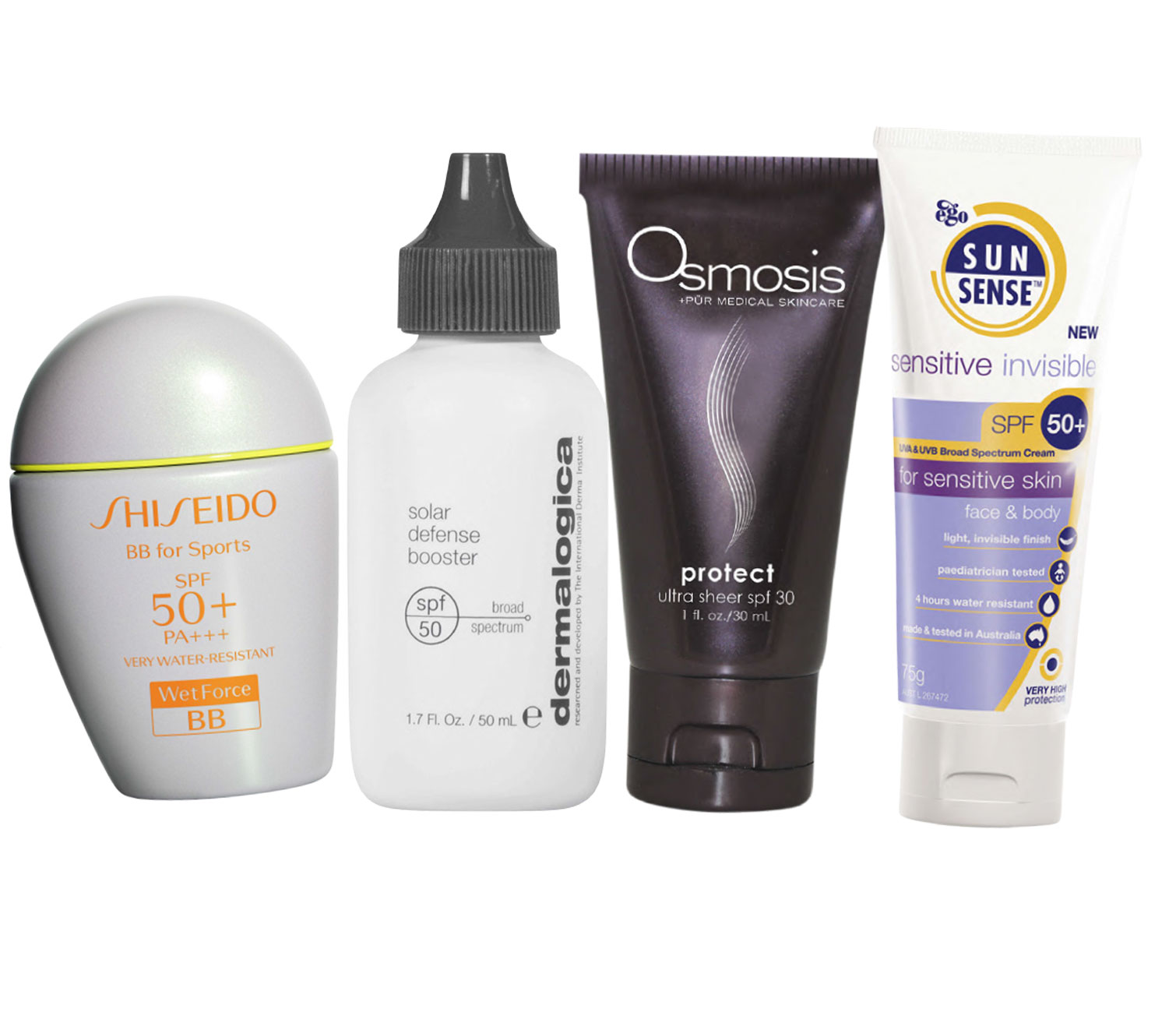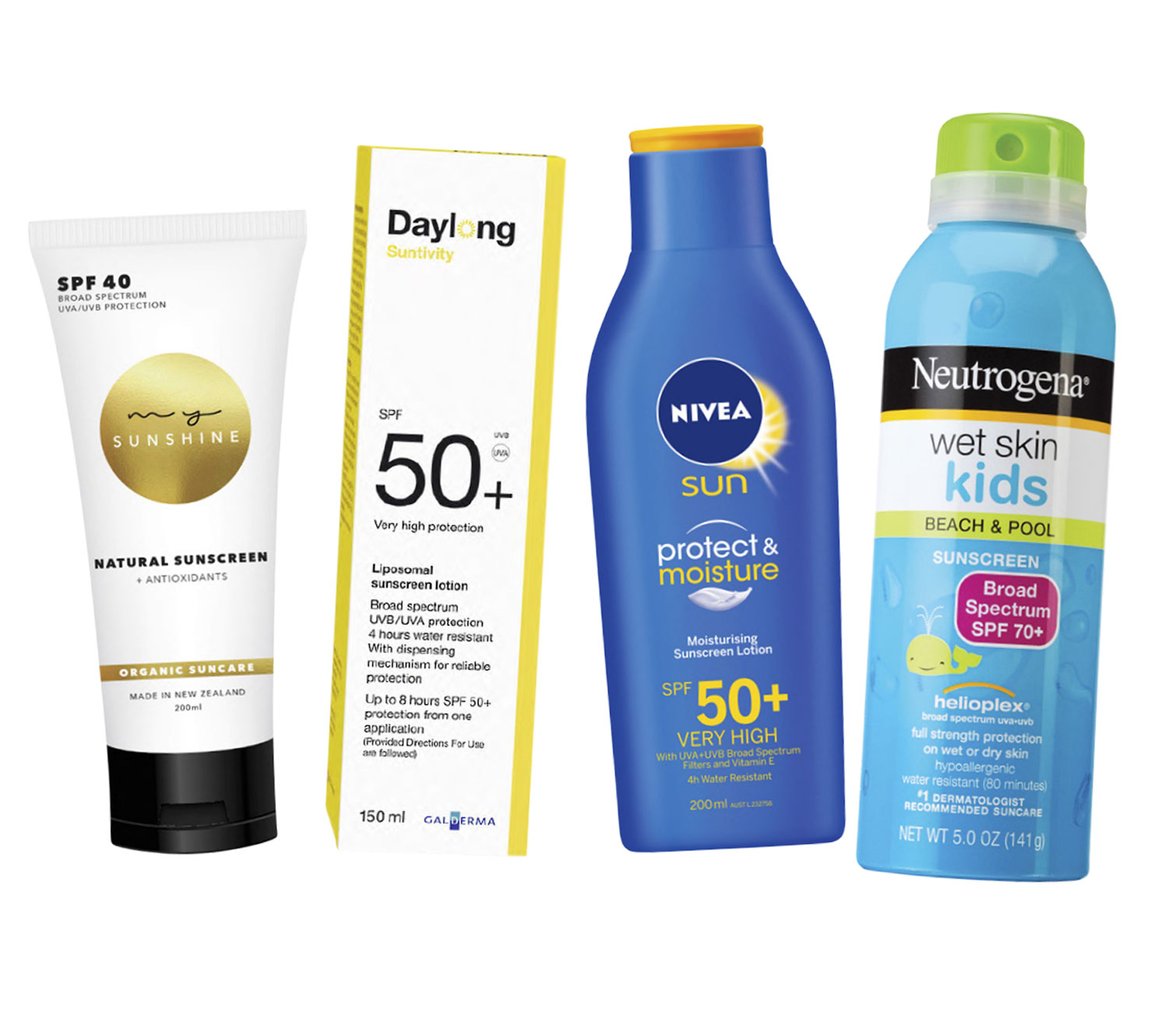Choosing a sunscreen can be confusing and the stuff only works if you use it properly.
Insist on broad spectrum products because they ward off both UVA rays (that penetrate the skin and damage DNA, which leads to sunburn, skin cancers and premature ageing) and UVB rays (primarily responsible for burns to the skin’s top layer).
What does SPF mean?
SPF stands for sun protection factor, and tells us how much longer we can expect to be exposed to UVB before burning, compared to if we wore no sunscreen.
So, if it takes 10 minutes to burn without a sunscreen and 150 minutes to burn with a sunscreen, then the SPF of that sunscreen is 15 (150/10).
If you have fair skin that burns easily, you should choose a broad- spectrum sunscreen with a high SPF (for example 50+).
If you have skin that tans, you could choose a broad-spectrum sunscreen with intermediate SPF (15+ to 30+).

1. Shiseido BB for Sports SPF50+ in three tinted shades, $59.
2. Dermalogica Solar Defense Booster SPF50, $92.
3. Osmosis Protect Ultra Sheer SPF30, $72.
4. SunSense Sensitive Invisible SPF50+, $17.99.
What are sunscreens made of?
Sunscreen falls into two categories based on ingredients. Either type is far better than none at all, but for some people, knowing the difference is helpful – particularly if you have skin that reacts easily.
Physical sunblocks (sometimes called mineral sunblock) rely on natural minerals – predominantly titanium dioxide and zinc – to reflect UV light.
To find out which minerals are used, look in the ingredients list. They can be chalky, but the new-generation versions are sheer once they have been rubbed in well and they start working as soon as applied. They are generally less irritating for those with sensitive skin.
Chemical sunscreens are typically formulated with a varying mix of synthetic ingredients. They absorb (rather than block) the sun’s UV rays, stopping their power to damage skin.
They absorb well and are good for wearing under make-up, and often have added skincare properties. Sprays are more likely to be this type. They need to be applied at least 15 to 30 minutes before stepping outside.

1. My Sunshine Natural Sunscreen + Antioxidants SPF30, $49.90, from mysunshine.co.nz.
2. Daylong Suntivity SPF50+, $29.99.
3. Nivea Sun Protect & Moisture Moisturising Sunscreen Lotion SPF50+, $19.39.
4. Neutrogena Wet Skin Kids Sunscreen Spray SPF70+, $24.99.
How much sunscreen should I use?
Apply plenty! For liquids and creams, use about 1 teaspoonful (5ml) for each arm, each leg, your back, your front and your face (which includes your neck and ears) or a shot glass full for your whole body.
Even if your make-up or moisturiser has SPF, double up with a dedicated sunscreen. Ditch any sunscreens past their expiry and don’t keep them in your car, as they will degrade faster in the heat.
How often do I re-apply my sunscreen?
Every two hours or more if you have been sweating, swimming or drying yourself with a towel. Insect repellents can also reduce your sunscreen’s SPF, so use a higher SPF and re-apply often.


